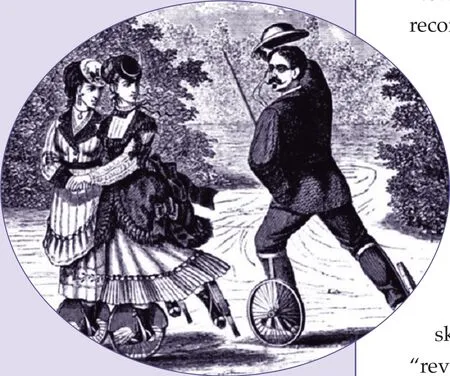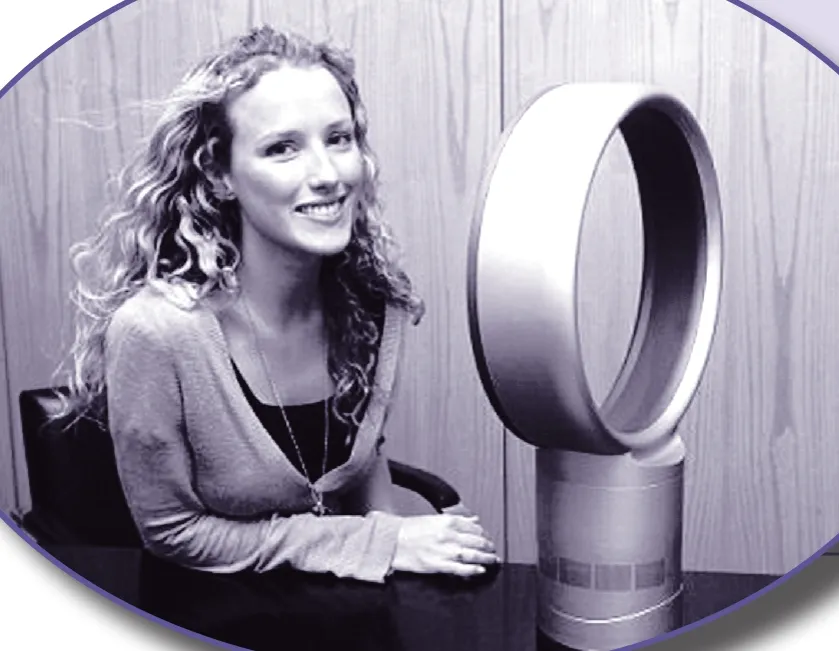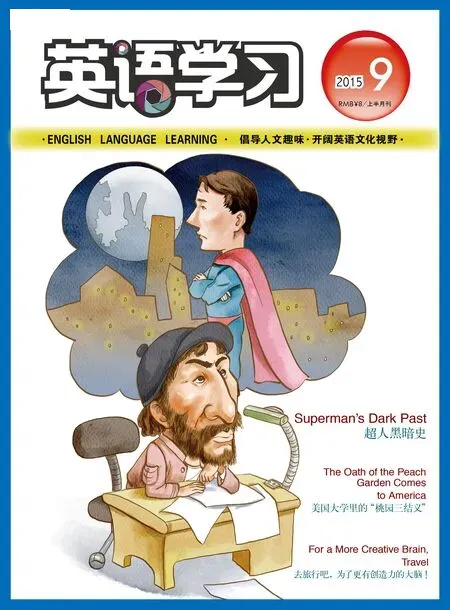Five Recent Inventions That Aren’t as New as We All Thought
Elizabeth S. Anderson
Selfie sticks, touchscreen devices, e-cigarettes and many other things seem like fairly modern inventions.1. selfie stick: 自拍杆;touchscreen device: 触屏设备;e-cigarette: 电子烟。Indeed, most of their “inventors” list them as newly invented and even go as far as seeking patents2. patent: 专利。. But the fact is, many of these “inventions” have already been in existence for quite some time. They may have earlier lookalikes that ended up not going into production or that went into limited production due to one reason or another.3. 它们早先可能有过相似品,但不是没有投入生产就是由于这样那样的原因而限产。lookalike: 相似品。Some also made it into full production but were recalled4. recall: 召回。due to poor sales.
1.Selfie Sticks

The first selfie stick was invented long before the first handheld5. handheld: 手持的。mobile device was made. A selfie stick was definitely invented by the Japanese man Hiroshi Ueda in the 1980s. A photographer and worker at the Minolta camera company, Hiroshi made the selfie stick because he and his wife were unable to take pictures of themselves during a trip to Europe. (When he asked a boy to take pictures of them, the boy ran off with the camera.)Frustrated, he invented something that would allow him take a picture of himself: He called it the “extender stick.”6. frustrated: 感到受挫的,失望的;extender stick: 延伸杆。Since the iPhone really hadn’t been invented yet, a small camera was to be attached to one end of the stick. It also had a small mirror in its front so that users could see how they would look in the photograph. He patented the “extender stick” in 1983. The product was mass produced7. mass produce: 大批量生产。for sale but it was a commercial failure. The quality of the pictures was low. Besides, previous research showed that the women back then were embarrassed by the idea of taking pictures of themselves. The selfie stick was then reinvented by Wayne Fromm in the year 2000, three years before Hiroshi’s patent expired8. expire: 过期。. Fromm called his the “quik pod.” He believes he is the inventor of today’s selfie sticks and has even sued9. sue: 控告。several other selfie stick producers. When asked about Hiroshi’s selfie sticks, he said they were “prior art.”
话说太阳底下无新事,眼下的一些时兴的发明其实都能在历史中找到相似或相近的前身。但因为时代和环境的种种限制,这些发明没能流行起来,而埋没在了光阴的尘埃中。时过境迁,让我们翻看有哪些看似空前绝后,实则卷土重来的“新”发明吧。
2. Touchscreens
In 2007, Apple released the first iPhone: a full touchscreen phone, complete with its own virtual10. virtual: 虚拟的。keypad. To many, Apple had done something new,something never seen before. They had made the first touchscreen phone. But this was incorrect: Apple did not make the first touchscreen phone, nor was the touchscreen a new invention.


To start with, a year before the first iPhone was released, LG had introduced a full touchscreen phone.Even that was not the first, though. The world’s first touchscreen phone was IBM’s Simon, which was released in 1992. And touchscreen technology even predates11. predate: 在日期上早于……。the Simon. The first touchscreen device was a tablet12. tablet:(计算机的)输入板,手写板。made by E. A. Johnson in 1965 that was used by air traffic controllers until 1995. Bent Stumpe and Frank Beck made the first capacitive13. capacitive: 电容性的。touchscreen in the early ‘70s. Unlike Johnson’s tablet, it could not be pressed with the fingers. Instead, it required a stylus14. stylus: 触控笔。. In 1971, Samuel Hurst developed the first resistive15. resistive: 电阻的。touchscreen, which he called the “elograph.” It responded to the fingers as well as a stylus. In 1985, HP invented the world’s first touchscreen computer, called the HP-150. In 1993, Apple also released its first touchscreen device—the Newton Personal Digital Assistant. The product was a flop16. flop: 彻底失败。,recording low sales.
3. Wheel Skates17. wheel skate: 巨型轮滑鞋。
Wheel skates look somewhat like regular inline skates, except that the wheels are much larger, up to the size of bicycle tires.18. inline skate: 单排轮滑鞋;up to: 相当于;tire:轮胎。They are seen as a cross between an inline skate, a ski, and a bike.19. cross: 杂交,混合;ski: 滑雪板。Recently,a company called Chariot20. chariot: 原指古代马拉的两轮战车,这里用于品牌名。Skates said they had come up with something unique—the Chariot wheel skates. According to the company, wheel skates are“revolutionary21. revolutionary: 革命性的。new skating products.” Revolutionary?They do at least revolve22. revolve: (使)旋转。. New? No. The first wheel skate was made more than 142 years ago.
It even featured in the March 19, 1870, issue ofScientific Americanmagazine.23. feature: v. 作为专题出现;issue: (期刊的)期,号。Made by Thomas Luders from Olney,Illinois, and called a “pedespeed,” the wheels then were much smaller, measuring around 36 centimeters (15 in) in diameter.24. measure around: 大小在……左右;in: 即inch,英寸;diameter: 直径。Luders also said the skates could be used by anybody, irrespective of their physique.25. irrespective of: 无论;physique: 体格,体形。He himself was a large, heavy man, and he claimed he could use them for two straight26. straight: 连续的。hours without getting tired. Another version of wheel skates, appearing in 1923, had its tires on the inside of the foot rather than outside. (Other than the size of the wheels, the main improvement made by Chariot Skates is the small tire at the back of the bigger tire for increased stability.27. 除了轮子的尺寸,沙里奥轮滑鞋最大的改进就是在大轮后面安了个小轮,以增加稳定性。other than: 除了。)
4. E-Cigarettes
E-cigarettes first started becoming popular in 2012. They work by heating a nicotine fluid to mimic a real cigarette.28. nicotine: 尼古丁;fluid: 液体;mimic: 模拟。Their invention is usually credited to Chinese pharmacist Hon Lik, who reportedly created it after he dreamed that he was drowning in a cloud of vapor.29. credit to: 将……归功于;pharmacist: 药剂师;drown:淹没;vapor: 蒸汽,烟雾。His father had died of lung cancer caused by cigarettes. He himself was an unrepentant smoker who had unsuccessfully tried quitting by using a nicotine patch.30. unrepentant: 顽固不化的;quit: 戒断;nicotine patch:尼古丁贴片。
The fact is, Hon Lik is not the first person to invent the e-cigarette. Way back in 1963, Herbert Gilbert made the world’s first device that could be used to inhale tobacco-flavored air.31. inhale: 吸入;tobaccoflavored: 烟草味的。In Gilbert’s original version, there was no form of combustion and it was free of nicotine.32. combustion: 燃烧,氧化;free of nicotine: 不含尼古丁的。He later designed a prototype33. prototype: 原型。that used a battery to create heat. He also used different flavors of water to create steam34. steam: 蒸汽。. He presented his prototypes to different chemical, pharmaceutical, and tobacco companies, but they simply turned down his prototypes.35. pharmaceutical: 制药的;turn down: 拒绝。

5. Bladeless Fans36. bladeless fan: 无叶风扇。
Simply put, bladeless fans are fans without blades. They work by sucking in air at their base and then blowing them out through several holes in their ring. The fan is reported to have been invented by James Dyson, who calls it the “Air Multiplier37. air multiplier: 空气增倍机。.” Just like the flying jetpack,it earned a spot inTime’s list of notable inventions of 2009.38. flying jetpack: 飞行喷气背包;earn a spot: 赢得一席,博得一个名额。And just like the jetpack, it was not the first of its kind. The first bladeless fan was actually patented in 1981 by a Japanese company called Tokyo Shiba Electric. Although Tokyo Shiba’s bladeless fan was never manufactured, James Dyson’s initial39. initial: 最初的。design of a bladeless fan design looked so similar to that of Tokyo Shiba Electric that the patent office refused to grant40. grant: 同意给予,准予。him a patent.The patent granted to Tokyo Shiba had already expired, but the patent office still required something substantially different before it could grant a new patent to James Dyson.41Dyson’s patent manager, Gill Smith, did not deny the similarities between both bladeless fans but said the difference between them was the“technology.”


